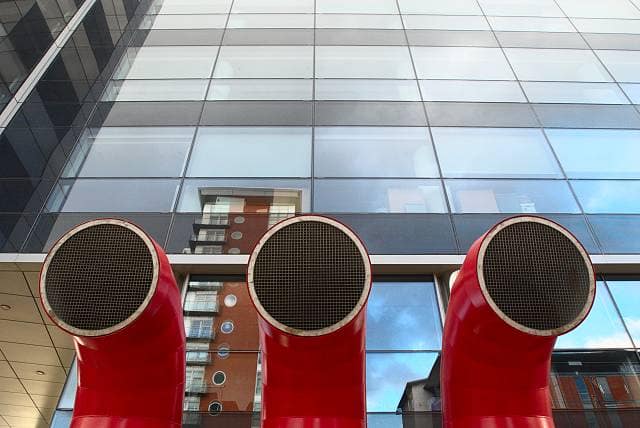Businesses can manage their buildings more effectively by adopting centralised systems that streamline operations. Modern tools automate tasks like lighting, heating, and security, reducing the need for manual intervention.
Real-time monitoring allows businesses to track energy usage and pinpoint inefficiencies. This data-driven approach helps optimise resources and cut unnecessary costs.
Integrating systems into a single platform simplifies management while ensuring different building functions work in harmony. The result is greater efficiency, lower expenses, and a more secure and comfortable environment.
1. What is a Building Management System (BMS)?
A Building Management System (BMS) is a centralised platform that controls and monitors various aspects of a building’s operations. It brings together key systems like heating, ventilation, air conditioning (HVAC), lighting, and security under one interface.
By automating these processes, a BMS reduces the need for manual intervention, making daily management far more efficient. It collects and analyses data in real-time, allowing businesses to make informed decisions to optimise performance and energy use.
Whether it’s a small office or a large facility, a BMS can be tailored to meet specific needs, making it a vital tool for modern building management.
For professional BMS Installation, working with experts ensures the system is tailored to your building’s unique needs.
2. Driving energy efficiency with BMS
Energy efficiency is one of the key benefits of a Building Management System. By monitoring energy consumption in real time, businesses can identify areas of wastage and make adjustments to reduce unnecessary usage.
Automation plays a major role, with systems like lighting and HVAC programmed to operate only when needed. For example, smart scheduling ensures lights and heating are turned off during non-working hours, saving energy without compromising comfort.
Over time, these optimisations not only lower energy bills but also contribute to a reduced environmental impact, making a BMS both a cost-effective and sustainable solution.
3. Strengthening security and access control
A Building Management System enhances security by integrating surveillance, access control, and alarm systems into a single platform. This allows businesses to monitor their premises in real time and respond quickly to potential threats.
Access control systems can be customised to grant or restrict entry based on roles or schedules, improving security for sensitive areas. Surveillance cameras and alarms can be monitored remotely, providing added flexibility and peace of mind.
By centralising these functions, a BMS not only simplifies security management but also ensures a safer environment for employees and visitors.
4. Creating a comfortable and productive environment
A well-managed building contributes to a more comfortable and productive workspace. A Building Management System helps maintain optimal temperature, air quality, and lighting conditions automatically.
For example, HVAC systems can adjust to external weather changes, ensuring consistent indoor comfort. Similarly, automated lighting can adapt to natural light levels, reducing eye strain and improving focus.
By prioritising employee comfort, businesses can create an environment where productivity thrives, while also reducing energy consumption and operational hassle.
5. Cost savings and long-term benefits
Implementing a Building Management System offers significant cost savings over time. Automation reduces energy wastage, leading to lower utility bills. The ability to monitor and analyse building data helps businesses identify inefficiencies and address them promptly.
A BMS also minimises maintenance costs by identifying potential issues early. This proactive approach reduces the risk of expensive repairs or equipment failures.
As businesses grow, a scalable BMS ensures operational efficiency remains intact, making it a valuable long-term investment for companies of all sizes.
Steps to get started with a BMS
The first step in implementing a Building Management System is assessing your building’s specific needs. Determine which systems, such as HVAC, lighting, or security, require integration and automation.
Next, research BMS options that align with your goals and budget. Many systems are modular, allowing businesses to start small and expand as needed.
Finally, work with professional installers to ensure the system is set up correctly and integrates seamlessly with your existing infrastructure. A tailored approach will maximise the benefits and ensure long-term success.








